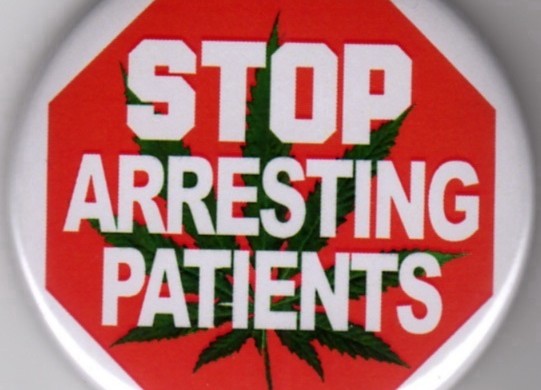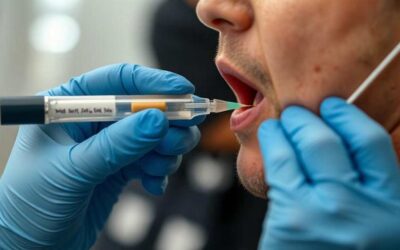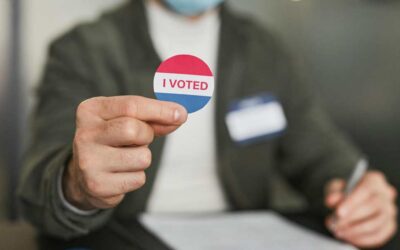INTRODUCTION
Medical marijuana legal defense attorneys are constantly confronted with difficult questions, debates, changing laws and media supporters or critics.
How one responds to these challenges will impact a case’s outcome and the future of the medical marijuana movement.
The main issue is defending qualified patients from harassment, arrest and jail. It must be noted that federal and some state laws still can subject qualified patients to arrest and imprisonment for using marijuana.
States, counties and cities that have medical marijuana laws can add supplementary criminal charges which can manipulate or eliminated any defense a client may have regarding medical marijuana use.
The objective of medical marijuana laws are to protect from arrest and imprisonment the hundreds of thousands of patients who are already using marijuana, as well as the doctors who are recommending such use.
Patients for whom the standard, legal drugs are not safe or effective are left with little choice when it comes to marijuana continue to suffer or obtain marijuana illegally and risk suffering legal consequences.
MEDICAL CHALLENGES AND INFORMATION FOR MARIJUANA
#1: “There is no reliable evidence that marijuana has medical value. Existing evidence is either anecdotal, unscientific, or not replicated.”
A: There is abundant scientific evidence that marijuana is a safe, effective medicine for some people. In 1999, the National Academy of Sciences’ Institute of Medicine (IOM) reported, “Nausea, appetite loss, pain, and anxiety are all afflictions of wasting, and all can be mitigated by marijuana.
Since then, extensive new research has confirmed marijuana’s medical benefits. Three University of California studies published since February 2007 have found that marijuana relieved neuropathic pain (pain caused by damage to nerves), a type of pain that commonly afflicts patients with multiple sclerosis, HIV/AIDS, diabetes, and a variety of other conditions, and for which conventional pain drugs are notoriously inadequate — and did so with only minor side effects.
An observational study reported in the European Journal of Gastroenterology & Hepatology found that hepatitis C patients using marijuana had three times the cure rate of those not using marijuana, apparently because marijuana successfully relieved the noxious side effects of anti-hepatitis C drugs, allowing patients to successfully complete treatment.
B: On September 6, 1988, after hearing two years of testimony, the Drug Enforcement Administration’s chief administrative law judge, Francis Young, ruled: “Marijuana, in its natural form, is one of the safest therapeutically active substances known … It would be unreasonable, arbitrary, and capricious for DEA to continue to stand between those sufferers and the benefits of this substance.
C: Numerous medical organizations have examined the evidence and concluded that marijuana can be a safe, effective medicine for some patients. These include the American College of Physicians, American Public Health Association, American Nurses Association, and many others.
#2: “Medical marijuana is unnecessary. We already have drugs that work better than marijuana for the conditions it’s used to treat.”
A: That’s not true. For example, neuropathic pain — pain caused by damage to the nerves — often is not helped by existing drugs, but marijuana has been shown to provide effective relief. This is a type of pain that affects millions of Americans with multiple sclerosis, diabetes, HIV/AIDS, and other illnesses.
B: Different people respond differently to different medicines. The most effective drug for one person might not work at all for another person. That is why there are different drugs on the market to treat the same ailment. Treatment decisions should be made in doctors’ offices, not by federal bureaucrats. Doctors need to have numerous substances available in their therapeutic arsenals in order to meet the needs of a variety of patients. That’s why the Physicians’ Desk Reference comprises 3,000 pages of prescription drugs, rather than just one drug per symptom.
C: Consider all of the over-the-counter pain medications: aspirin, acetaminophen, ibuprofen, etc. We do not just determine which is “best” and then ban all of the rest. Because patients are different, doctors must have the freedom to choose what works best for a particular patient. Why use a double standard for marijuana?
D: The 1999 Institute of Medicine report explained:• “Although some medications are more effective than marijuana for these problems, they are not equally effective in all patients.” [T]here will likely always be a subpopulation of patients who do not respond well to other medications. The combination of cannabinoid drug effects (anxiety reduction, appetite stimulation, nausea reduction, and pain relief) suggests that cannabinoids would be moderately well suited for certain conditions, such as chemotherapy-induced nausea and vomiting and AIDS wasting. The critical issue is not whether marijuana or cannabinoid drugs might be superior to the new drugs, but whether some group of patients might obtain added or better relief from marijuana or cannabinoid drugs.”
#3: “Why is marijuana needed when it is already available in pill form?”
A: Marijuana is not available in pill form. THC, the component responsible for marijuana’s “high,” is sold as the prescription pill Marinol (with the generic name “dronabinol”). But people who use the pill find that it commonly takes an hour or more to work, while vaporized or smoked marijuana takes effect almost instantaneously.
They also find that the dose of THC they have absorbed (in the pill form) is often either too much or too little. Because slow and uneven absorption makes oral dosing of THC so difficult, The Lancet Neurology wrote in May 2003, “Oral administration is probably the least satisfactory route for cannabis.” In its 2008 position paper on medical marijuana, the American College of Physicians noted, “Oral THC is slow in onset of action but produces more pronounced, and often unfavorable, psychoactive effects than those experienced with smoking.”
B: As Mark Kris, M.D., one member of an expert panel convened by the National Institutes of Health in 1997 to review the scientific data on medical marijuana, explained during the group’s discussion on February 20, 1997: “[T]he last thing that [patients] want is a pill when they are already nauseated or are in the act of throwing up.”
C: Marijuana contains at least 66 active cannabinoids in addition to THC.13 Research has shown that these other compounds contribute significantly to marijuana’s therapeutic effects. For example, cannabidiol (CBD) has been shown to have anti-nausea, anti-anxiety, and anti-inflammatory actions, as well as the ability to protect nerve cells from many kinds of damage. CBD also moderates THC’s effects so patients are less likely to get excessively “high.” Other cannabinoids naturally contained in marijuana have also shown significant therapeutic promise.
D: Thousands of patients continue to break the law to obtain marijuana, even though they could legally use the THC pill. Why would they risk arrest and prison to use something that doesn’t work?
#4: “Why not isolate the other useful cannabinoids and make them available in a pure, synthetic form?”
A: Marijuana contains at least 66 naturally occurring cannabinoids. While spending time and money testing and producing pharmaceutical versions of these chemicals may someday produce useful drugs, it does nothing to help patients now. The Institute of Medicine urged such research in 1999, but added, “In the meantime there are patients with debilitating symptoms for whom smoked marijuana might provide relief.”
B: Marijuana naturally contains all 66 cannabinoids in a combination that is safe and effective, and which has already given relief to millions of people. Given the current state of research, it will be years before any new cannabinoid drugs reach pharmacy shelves. Why should seriously ill patients have to risk arrest and jail for years while awaiting new pharmaceuticals which may or may not ever be available?
C: If spending time and money isolating the different cannabinoids would help patients, then we support such research. But such research should not be a stall tactic to keep medical marijuana illegal. Patients should be allowed to use a drug they and their doctors know works in the meantime — in many cases, that drug is marijuana.
#5:“Why not make THC and other cannabinoids available in inhalers, suppositories, and so forth?”
A: If these delivery systems would help patients, then they should be made available. However, the development of these systems should not substitute for the research into marijuana that is necessary for FDA approval of this natural medicine. A safe, effective delivery system for whole marijuana already exists: vaporization.
B: The availability of such delivery systems should not be used as an excuse to maintain the prohibition of the use of natural marijuana. As long as there are patients and doctors who prefer the natural substance, they should not be criminalized for using or recommending it, no matter what alternatives are available. Doctors and patients should be able to choose the form that’s best for their particular situation.
#6: “Doesn’t Sativex, the new marijuana-based spray, make use of the crude plant unnecessary?”
A: In fact, Sativex, a liquid extract of natural marijuana, proves that marijuana is a medicine. Sativex is to marijuana as a cup of coffee is to coffee beans. If Sativex is safe and effective, marijuana is safe and effective. But for now, Sativex is legally available only in Canada. The company that makes it, GW Pharmaceuticals, only recently started the process of seeking U.S. approval, which is likely to take years.
B: Natural marijuana has significant advantages over Sativex. For one thing, Sativex acts much more slowly than marijuana that is vaporized or smoked. Peak blood levels are reached in one and a half to four hours, as opposed to a matter of minutes with inhalation.16 Because patients have found that different strains of marijuana provide the best relief for different conditions, Sativex is unlikely to help every patient who benefits (or could benefit) from whole marijuana. It’s simply another form of medical marijuana, and patients and doctors should be able to choose what works best for each individual.
#7: “The FDA says that marijuana is not a medicine and that medical marijuana laws subvert the FDA drug approval process.”
A: The FDA issued its April 2006 statement without conducting any studies or even reviewing studies done by others, under political pressure from rabidly anti-medical marijuana politicians such as Congressman Mark Souder(R-Ind.). The FDA simply ignored evidence that contradicts federal policy, such as the 1999 Institute of Medicine report. That’s why IOM co-author Dr. John A. Benson told The New York Times that the government “loves to ignore our report … They would rather it never happened.”17 The FDA statement was immediately denounced by health experts and newspaper editorial boards around the country as being political and unscientific.
B: State medical marijuana laws have absolutely nothing to do with the FDA drug approval process. The FDA does not arrest people for using unapproved treatments. The FDA does not bar Americans from growing, using, and possessing a wide variety of medical herbs that it has not approved as prescription drugs, including echinacea, ginseng, St. John’s Wort, and many others. State medical marijuana laws don’t conflict with the FDA in the slightest. They simply protect medical marijuana patients from arrest and jail under state law.
C: There is already substantial evidence that marijuana is safe and effective for some patients, including new studies published after the FDA’s statement. However, the federal government has blocked researchers from doing the specific types of studies that would be required for licensing, labeling, and marketing marijuana as a prescription drug. They’ve created a perfect Catch-22: Federal officials say “Marijuana isn’t a medicine because the FDA hasn’t approved it,” while making sure that the studies needed for FDA approval never happen.
D: Marijuana was already on the market (in some two dozen preparations, many marketed by well-known pharmaceutical companies) before the 1938 Food, Drug, and Cosmetics Act was passed, creating the FDA. Under the terms of the Act, marijuana should not be considered a “new” drug, subject to the FDA drug-approval requirements that new drugs must meet. Many older drugs, including aspirin and morphine, were “grandfathered in” under this provision, without ever being submitted for new-drug approval by the FDA.
E: Half of current prescriptions have never been declared safe and effective by the FDA. Between 40-60% of all drug prescriptions in this country are “off-label” — i.e. for drugs not approved by the FDA for the condition they’re being prescribed for. We know much more about marijuana’s safety and efficacy in cancer, AIDS, MS, and many other conditions than we know about most off-label prescriptions.
F: The FDA is not infallible. For instance, FDA-approved Vioxx is estimated to have caused between 26,000 and 55,000 needless deaths before it was taken off the market. And David Graham, associate director of the FDA’s Office of Drug Safety, has told Congress that the FDA is “virtually defenseless” against another Vioxx-type disaster. In contrast, 5,000 years of real world experience with marijuana show that it is safe and effective for many patients.
#8: “Doesn’t medical marijuana send the wrong message to children?”
A: Experience in states with medical marijuana laws shows that they do not increase teen marijuana use. For example, the state-sponsored California Student Survey (CSS) documented that marijuana use by California teens rose markedly until 1996 — the year California’s medical marijuana law, Proposition 215, passed — and then dropped dramatically afterwards — by nearly half in some age groups.18State surveys of students in the other medical marijuana states have consistently reported declines in teen marijuana use since those laws were passed.19The state of California commissioned an independent study examining the effects of Proposition 215, as part of the 1997-98 CSS. Researchers concluded, “There is no evidence supporting that the passage of Proposition 215 increased marijuana use during this period.”20
B: Harsh, uncompassionate laws — like those which criminalize patients for using their medicine — send the wrong message to children. Dishonesty sends the wrong message to children. Arguing that sick people should continue to suffer in order to protect children sends the wrong message to children.
C: Children can and should be taught the difference between medicine and drug abuse. There are no substances in the entire Physicians’ Desk Reference that children should use for fun. In fact, doctors can prescribe cocaine, morphine, and methamphetamine. Children are not taught that these drugs are good to use recreationally just because they are used as medicines.
D: It is absurd to think that children will want to be as “cool” as a dying cancer patient. If anything, the use of marijuana by seriously ill patients might de-glamorize it for children. The message is, “Marijuana is for sick people.”
#9: “It’s dangerous to allow patients to grow marijuana, especially when children might be around. Not only does it expose kids to an illegal drug, it puts them in danger of criminal activity: Patients may sell their marijuana on the illicit market or thieves could break into the home to rob them of it.”
A: There are already laws against drug dealing. If someone is selling marijuana to non-patients, they’re breaking the law and subject to arrest. And state and county child protective services agencies already have the power to protect children whose parents are engaged in criminal activity. A medical marijuana law changes none of this.
B: What do you think is more dangerous: a bottle of liquid morphine sitting next to a dying patient’s bed (or a bottle of OxyContin in the medicine cabinet), or a marijuana plant growing in the basement? All medicines need to be handled with appropriate care and kept out of easy reach of children. Marijuana is no different.
C: Criminals break into homes every day to steal valuable items — jewelry, high-end electronics, and even prescription drugs. We don’t ban possession of these items because the owners might be victims of crime. By your logic, parents shouldn’t be allowed to drive 1995 Honda Civics (the most-stolen vehicle in 2007, according to the National Insurance Crime Bureau).
#10: “Marijuana is too dangerous to be used as a medicine. More than 10,000 scientific studies have shown that marijuana is harmful and addictive.”
A: A large and growing body of scientific evidence demonstrates that the health risks associated with marijuana are actually relatively minor. The 1999 Institute of Medicine report noted, “[E]xcept for the harms associated with smoking, the adverse effects of marijuana use are within the range of effects tolerated for other medications. “(See #26 for a discussion of smoking).
In 2008, the American College of Physicians agreed, citing marijuana’s “relatively low toxicity.” A government-funded study, conducted by researchers at the Kaiser Permanente HMO, found no association between marijuana use and premature death in otherwise healthy people.
B: Doctors are allowed to prescribe cocaine, morphine, and methamphetamine. Can anyone say with a straight face that marijuana is more dangerous than these substances?
C: All medicines have some negative side effects.
For example, Tylenol (acetaminophen) has been estimated to kill nearly 500 Americans per year by causing acute liver failure, while no one has ever died from marijuana poisoning. But no one would seriously suggest banning Tylenol because it’s too dangerous. In contrast, recent medical marijuana studies have found no significant side effects. (See responses to #1.)
The question is this: Do the benefits outweigh the risks for an individual patient? Such decisions should be made by doctors and patients, not the criminal justice system. Patients should not be criminalized if their doctors believe that the benefits of using medical marijuana outweigh the risks.
D: The “10,000 studies” claim is simply not true. The University of Mississippi Research Institute of Pharmaceutical Sciences maintains a 12,000-citation bibliography on the entire body of marijuana literature. The institute notes: “Many of the studies cited in the bibliography are clinical, but the total number also includes papers on the chemistry and botany of the Cannabis plant, cultivation, epidemiological surveys, legal aspects, eradication studies, detection, storage, economic aspects and a whole spectrum of others that do not mention positive or negative effects … However, we have never broken down that figure into positive/negative papers, and I would not even venture a guess as to what that number would be.” You cannot provide a list of 10,000 negative studies, so please stop making this false statement.
#11:“Isn’t marijuana bad for the immune system?”
A: Scientific studies have not demonstrated any meaningful harm to the immune system from marijuana. The Institute of Medicine reported, “Despite the many claims that marijuana suppresses the human immune system, the health effects of marijuana-induced immunomodulation are still unclear.” The IOM also noted, “The short-term immunosuppressive effects [of marijuana] are not well established; if they exist at all, they are probably not great enough to preclude a legitimate medical use.”
B: Extensive research in HIV/AIDS patients — whose immune systems are particularly vulnerable — shows no sign of marijuana-related harm. University of California at San Francisco researcher Donald Abrams, M.D., has studied marijuana and Marinol in AIDS patients taking anti-HIV combination therapy. Not only was there no sign of immune system damage, but the patients gained T-lymphocytes, the critical immune system cells lost in AIDS, and also gained more weight than those taking a placebo. Patients using marijuana also showed greater reductions in the amount of HIV in their bloodstream.
Long-term studies of HIV/AIDS patients have shown that marijuana use (including social or recreational use) does not worsen the course of their disease. For example, in a six-year study of HIV patients conducted by Harvard University researchers, marijuana users showed no increased risk of developing AIDS-related illness.
In her book Nutrition and HIV, internationally known AIDS specialist Mary Romeyn, M.D., noted, “The early, well-publicized studies on marijuana in the 1970s, which purported to show a negative effect on immune status, used amounts far in excess of what recreational smokers, or wasting patients with prescribed medication, would actually use … Looking at marijuana medically rather than sociopolitically, this is a good drug for people with HIV.”
#12: “Marijuana contains over 400 chemicals, including most of the harmful compounds found in tobacco smoke.”
A: Coffee, mother’s milk, broccoli, and most foods also contain hundreds of different chemical compounds. This number doesn’t mean anything. Marijuana is a relatively safe medicine, regardless of the number of chemical compounds found therein.
#13: “Marijuana’s side effects — for instance, increased blood pressure — negate its effectiveness in fighting glaucoma.”
A: Paul Palmberg, M.D., one member of an expert panel convened by the National Institutes of Health in 1997 to review the scientific data on medical marijuana, explained during the group’s discussion on February 20, 1997, “I don’t think there’s any doubt about its effectiveness, at least in some people with glaucoma.”
B: The federal government has given marijuana to at least three patients with glaucoma, and it preserved their vision for years after they were expected to go blind.
C: So should someone who uses marijuana to treat glaucoma be arrested? Shouldn’t we trust a patient and a doctor to make the right decision regarding that patient’s circumstances?
#14:“How exactly do state medical marijuana laws help patients?”
A: The laws of Alaska, California, Colorado, Hawaii, Maine, Michigan, Montana, Nevada, New Mexico, Oregon, Rhode Island, Vermont, and Washington remove state-level criminal penalties for using, obtaining, or cultivating marijuana strictly for medical purposes. To verify a legitimate medical need, a doctor’s recommendation is required. Doctors may not be punished by the state for making such recommendations.
Maryland’s law, enacted in 2003, provides for reduced penalties for patients who present evidence that their marijuana use was necessary for medical purposes. Unfortunately, Maryland’s law does not protect patients from arrest. (For a detailed analysis of these laws, see MPP’s report at www.mpp.org/statelaw.)Federal laws still apply to patients. While the federal government does not have the resources to arrest, try, and incarcerate a significant number of small-scale medical marijuana users and growers, the federal government has raided some large-scale medical marijuana distributors in California. However, because 99 out of 100 marijuana arrests are made at the state or local level, state medical marijuana laws give patients 99% protection.
#15:“Don’t medical marijuana laws put the states in violation of federal law?”
A: No. There is no federal law that mandates that states must enforce federal laws against marijuana possession or cultivation. States are free to determine their own penalties — or lack thereof — for drug offenses. State governments cannot directly violate federal law by giving marijuana to patients, but states can refuse to arrest patients who possess or grow their own. The 2005 Supreme Court decision in Gonzales v. Raich (discussed in detail under #33) did not overturn state medical marijuana laws or block other states from adopting similar measures.
#16:“Aren’t these medical marijuana bills and initiatives full of loopholes?”
A: The medical marijuana laws adopted from 1998 on in Alaska, Colorado, Hawaii, Maine, Michigan, Montana, Nevada, New Mexico, Oregon, Rhode Island, Vermont, and Washington were all drafted very carefully to make sure that there are no loopholes, real or imagined. These laws are not at all like the comparatively open-ended law in California (see B).
Read them carefully and you’ll see. Medical marijuana advocates have nothing to gain and everything to lose by wording the initiatives so as to enable recreational marijuana use.
B: The first successful medical marijuana initiative, California’s Proposition 215, did contain some vague wording, which has resulted in some reported abuse. However, California courts have issued clarifying rulings, and the state legislature, as well as many cities and counties, has enacted laws and regulations aimed at eliminating ambiguities. In 2008, California Attorney General Jerry Brown issued guidelines that have also helped provide clarity. Despite these concerns, there is broad consensus in California that the law is generally working well and doing what the voters intended — protecting seriously ill medical marijuana patients from the risk of arrest — and recent polls have shown voter support for the law running at roughly 3-1. Newer medical marijuana laws in other states have been drafted much more precisely, eliminating many of the concerns raised by Proposition 215.
C: If the bills and initiatives are not perfect, they are the best attempt to protect patients and physicians from punishment for using or recommending medical marijuana. The real problem is that the federal government’s overriding prohibition of medical marijuana leaves state bills and initiatives as the only option to help patients at this point. As soon as federal law changes, this process will no longer be needed.
#17:“These bills and initiatives basically legalize marijuana for everyone.”
A: That is simply not true. A person must have an ailment that a licensed medical doctor believes is best treated with marijuana. The General Accounting Office (the investigative arm of Congress, recently renamed the Government Accountability Office) interviewed officials from 37 law enforcement agencies in four states with medical marijuana laws. A key issue they examined was whether medical marijuana laws had interfered with enforcement of laws regarding non-medical use. According to the GAO’s November 2002 report, the majority of these officials “indicated that medical marijuana laws had had little impact on their law enforcement activities.”In California, the number of marijuana arrests has increased since passage of Prop. 215, totaling over 65,000 in 2004. That hardly sounds like legalization, does it?
#18:“Didn’t these medical marijuana initiatives pass because of well-funded campaigns that hoodwinked the voters?”
A: Actually, the public has never needed to be persuaded — much less “hoodwinked” — to support legal protection for medical marijuana patients.State, local, and national public opinion polls have consistently shown overwhelming public support. A CNN/Time magazine national poll, published November 4, 2002, found 80% support for legal access to medical marijuana. During the 1996 campaign for California’s Proposition 215, independent polls showed the measure ahead months before any ads ran. Just as important, polling in states that have had medical marijuana laws for years shows support just as high as or — in most cases — higher than when they were on the ballot, so voters clearly don’t think they were hoodwinked.
B: The medical marijuana initiative drives have actually been low-budget campaigns by modern standards. In California, where statewide campaign expenditures commonly run into the tens of millions of dollars, the Proposition 215 campaign spent slightly more than $2 million.In contrast, federal officials, including the last two White House drug czars, have used their offices and budgets to oppose medical marijuana initiatives, campaigning with a virtually unlimited supply of taxpayer dollars. The Office of National Drug Control Policy spends nearly as much money on its anti-drug ads (many of which demonize marijuana) in two weeks as Proposition 215 supporters spent during the entire campaign!
#19:“This bill/initiative doesn’t even require a doctor’s ‘prescription,’ just a ‘recommendation’!”
A: The federal government prohibits doctors from “prescribing” marijuana for any reason. A prescription is a legal document ordering a pharmacy to release a controlled substance. Currently, the federal government does not allow this for marijuana. However, there needs to be some way for state criminal justice systems to determine which marijuana users have a legitimate medical need. So state medical marijuana laws require doctors’ recommendations. Doctors recommend many things: exercise, rest, chicken soup, vitamins, cranberry juice for bladder infections, and so on. The right of physicians to recommend marijuana when appropriate for a patient’s condition has been upheld by the federal courts.Nothing in these laws requires the courts or law enforcement to simply take it on faith that a person has a legitimate physician’s recommendation for marijuana. They can and do ask for documentation. The vast majority of doctors who are willing to write such a recommendation do not do so lightly or casually, but state medical boards do investigate and discipline physicians who fail to follow appropriate standards of care.
B: If you would trust a doctor to write a prescription for marijuana, why not trust a doctor to write a professional opinion on his or her letterhead instead? Admit it: You simply do not want patients to use medical marijuana, and you’re just nit-picking for an excuse to attack the bill/initiative. What advantage would there be to a prescription instead of a written, signed recommendation on a physician’s letterhead? Please explain the big difference in practical terms.
C: Oh, so you agree that doctors should be allowed to prescribe marijuana?
#20:“These bills and initiatives are confusing to law enforcement officials.”
A: What’s so confusing? If a person is growing or using marijuana and has a written recommendation from a physician, do not arrest the patient or caregiver. If the person does not have suitable documentation, either call the person’s doctor or arrest the person and let the courts decide.It should be no more confusing than determining if someone drinking alcohol is underage or on probation, if someone is the legal owner of a piece of property, or if a person is a legal immigrant or not.
B: [Use the GAO statement in the response to #17.]
#21: “Cannabis buyers’ clubs are totally out of control!”
A: That’s an exaggeration, but to the degree that it’s true, it’s true only in California, whose medical marijuana law was the first and most loosely worded. The much tighter wording in the other 12 states has effectively prevented such problems.
B: Many dispensaries or buyers’ clubs in California (the only state whose law currently allows for such entities) have now worked out cooperative arrangements with local law enforcement and public health officials. Former San Francisco District Attorney Terence Hallinan explained:“Our Department of Public Health has established a system of identification cards that protects patient confidentiality while helping law enforcement identify documented medical marijuana patients. Nonprofit medical marijuana dispensaries have become an important part of this system, providing a safe, quality-controlled supply of medicinal cannabis to seriously ill people and working closely with local law enforcement and public health officials.”
C: Many cities have developed or are in the process of developing regulations to ensure that medical marijuana dispensaries operate in a safe, healthful, and law-abiding manner, and California’s attorney general recently issued guidelines to assist in that process. State and local officials have the ability to prosecute dispensary operators who do not obey the law. “Out of control” clubs will be shut down, and the operators will serve serious time in prison. The biggest obstacle to effective local regulation of dispensaries is federal law that irrationally treats anyone providing medical marijuana to a cancer or AIDS patient as a common drug dealer, making no distinction between good guys and bad guys. States and cities will have no trouble effectively regulating dispensaries if the federal government will let them.
D: Any problems with dispensaries could be eliminated if Congress passed federal legislation allowing states to create a system whereby medical marijuana is sold through licensed pharmacies. Such a system is already in place in the Netherlands.
#22: “Isn’t the medical marijuana issue just a sneaky step toward legalization?”
A: How? Exactly how does allowing seriously ill patients to use marijuana lead to the end of the prohibition of marijuana for recreational use? Doctors are allowed to prescribe cocaine and morphine, and these drugs are not even close to becoming legal for recreational use.
B: Each law should be judged on its own merits. Should seriously ill patients be subject to arrest and imprisonment for using marijuana with their doctors’ approval? If not, then support medical marijuana access. Should healthy people be sent to prison for using marijuana for fun? If so, then keep all non-medical uses illegal. There’s no magic tunnel between the two.
C: Supporters of medical marijuana include some of the most respected medical and public-health organizations, including the American College of Physicians, American Public Health Association, American Nurses Association, American Academy of HIV Medicine, and the state medical societies of New York, California, and Rhode Island. Do you really think these organizations are part of a conspiracy to legalize drugs?
#23: “Are people really arrested for medical marijuana?”
A: There were dozens of known medical marijuana users arrested in California in the 1990s, which is what prompted people to launch the medical marijuana initiative there. There have been many other publicized and not-so-publicized cases across the United States. Even after Proposition 215 passed in November 1996, the federal government has continued to raid, arrest, and jail medical marijuana patients and caregivers. (See also B to #24.)
B: Roughly 17 million marijuana users have been arrested since 1970. Unfortunately, the government does not keep track of how many were medical users. However, even if only 1% of those arrestees used marijuana for medical purposes, that is approximately 170,000 patients arrested!
C: You insist that patients don’t really get arrested for using medical marijuana. If that is the case, then the bill/initiative doesn’t change anything. Why are you so strongly opposed to it?
D: The possibility of arrest is itself a terrible punishment for seriously ill patients. Imagine the stress of knowing that you can be arrested and taken to jail at any moment. Stress and anxiety are proven detriments to health and the immune system. Should patients have to jump out of bed every time they hear a bump in the night, worrying that the police are finally coming to take them away?
#24: “Do people really go to prison for medical marijuana offenses?”
A: Federal law and the laws of 37 states do not make any exceptions for medical marijuana. Federally, possession of even one joint carries a penalty of up to one year in prison. Cultivation of even one plant is a felony, with a maximum sentence of five years. Most states’ laws are in this same ballpark. With no medical necessity defense available, medical marijuana users are treated the same as recreational users. Many are sent to prison.
B: There are too many examples to list. Here are just a few: Rancher and Vietnam veteran Larry Rathbun was arrested in December 1999 for cultivating medical marijuana to relieve his degenerative multiple sclerosis. When he was arrested in 1999, he could still walk, which he attributes to the medical use of marijuana. After serving 19 months, Rathbun came out of Montana State Prison confined to a wheelchair. Byron Stamate spent three months in a California jail for growing marijuana for his disabled girlfriend (who killed herself so that she would not have to testify against Byron). Gordon Farrell Ethridge spent 60 days in an Oregon jail for growing marijuana to treat the pain from his terminal cancer. Oklahoman Will Foster served over four years in prison (of an original sentence of 93 years) for growing marijuana for chronic pain. Quadriplegic Jonathan Magbie, who used marijuana to ease the constant pain from the childhood injury that left him paralyzed, died in a Washington, D.C., jail in September 2004 while serving a 10-day sentence for marijuana possession.
C: Estimates vary, but all sources agree that there are at minimum tens of thousands of marijuana offenders in prisons and jails at any given time. Even if only 1% of them are medical marijuana users, that is hundreds of patients behind bars right now!
D: Even if a patient is not sent to prison, consider the trauma of the arrest. A door kicked in, a house ransacked by police, a patient handcuffed and put into a police car. Perhaps a night or two in jail. Court costs and attorney fees paid by the patient and the taxpayers. Probation — which means urine tests for a couple of years, which means that the patient must go without his or her medical marijuana. Huge fines and possible loss of employment —which hurt the patient’s ability to pay insurance, medical bills, rent, food, home-care expenses, and so on. Then there’s the stigma of being a “druggie.” Doctors might be too afraid to prescribe pain medication to someone whom the system considers a “drug addict.” Should any of this happen to seriously ill people for using what they and their doctors believe is a beneficial medicine?
#25: “Isn’t the government making it easier to do medical marijuana research? Since they are becoming more flexible, shouldn’t we wait for that research before we proceed?
A: As a Schedule I drug, marijuana can be researched as a medicine only with federal approval. Until California voters passed Proposition 215 in 1996, federal authorities blocked all efforts to study marijuana’s medical benefits. Since then, federal restrictions have been loosened somewhat, and a small number of studies have gone forward, but that happened because the passage of ballot initiatives forced the government to acknowledge the need for research. The federal government remains intensely hostile to medical marijuana, and if the political pressure created by ballot initiatives and legislative proposals subsides, the feds will surely go back to their old, obstructionist ways. The federal government has been supplying medical marijuana to a small group of patients for over 20 years, in what is officially deemed a research program, but has refused to study even its own patients!
B: Some studies have indeed been completed, and they’ve all shown medical marijuana to be safe and effective. More research is always desirable, but we know enough right now to know that there is no justification for arresting patients using medical marijuana under their doctor’s care.
C: The studies approved by the federal government thus far are small, pilot studies that are providing useful data, but are not large enough to bring about FDA approval of marijuana as a prescription drug. And all medical marijuana research must be done with marijuana supplied by the National Institute on Drug Abuse. NIDA’s product is poor-quality, low-grade marijuana that is likely to show less efficacy and greater side effects than the marijuana available through medical marijuana dispensaries in California and elsewhere — but it remains illegal to use this higher-quality marijuana for research! Scientists and activists have appealed to the Drug Enforcement Administration to allow other sources of marijuana to be used, and in 2007, DEA Administrative Law Judge Mary Ellen Bittner ruled that a proposed University of Massachusetts project to grow and study marijuana for medical purposes should be allowed to proceed. But the DEA does not have to obey Bittner’s ruling and has given no indication that it intends to do so. The U.S. government remains the largest single obstacle to medical marijuana research.
#26: “Modern medicine no longer uses crude plant products like marijuana, so this would be a return to the dark ages. Aspirin is made from willow bark, but we take it in pill form, not by chewing — or smoking — willow bark. You can’t control the dosage of a crude plant product.”
A: If you’re suggesting that medical marijuana be treated just like willow bark, then you’re endorsing our position. Yes, most people prefer their aspirin in pill form, but we don’t arrest and jail patients for possession of willow bark. And in this case, there is plenty of evidence that the whole plant works better than the pharmaceutical alternatives now available. (See 3 and 4.)
B: Marijuana is so safe that patients can easily find the proper dose themselves with no danger of overdose. As University of Washington researcher Dr. Gregory Carter and colleagues noted in a recent journal article, “THC (and other cannabinoids) has relatively low toxicity and lethal doses in humans have not been described … It has been estimated that approximately 628 kilograms of cannabis would have to be smoked in 15 minutes to induce a lethal effect.”
C: In his book, Understanding Marijuana, State University of New York psychology professor Mitch Earleywine explains, “Smoked marijuana may also have fewer side effects than oral THC and other drugs. Patients can smoke a small amount, notice effects in a few minutes, and alter their dosages to keep adverse reactions to a minimum.”
D: The Canadian government-approved prescribing information for Sativex, the natural marijuana extract now sold by prescription in Canada (discussed in #6), gives patients complete freedom to adjust their dose as needed. The official pamphlet provided to patients specifies: “The dose you require is determined by you. You can determine the dose that best suits you according to the pain relief you experience.” Patients using whole marijuana can do just the same — and more easily, because the action of vaporized or smoked marijuana is much faster than Sativex.
#27: “How can you call something a medicine when you have to smoke it? Smoke is not a medicine, and marijuana smoke contains more carcinogens than tobacco smoke.”
A: Patients don’t need to smoke marijuana. Marijuana can be vaporized, eaten, or made into extracts and tinctures. (Such products were sold in pharmacies prior to marijuana prohibition in 1937.) The tars and other unwanted irritants in smoke have nothing to do with marijuana’s therapeutically active components, called cannabinoids. Vaporizers are simple devices that give users the fast action of inhaled cannabinoids without most of those unwanted irritants.39, 40 Research on vaporizers has proceeded more slowly than it should have because of federal obstructionism, and they cannot be marketed openly because the government considers them illegal “drug paraphernalia.”
B: While heavy marijuana smokers do face some health risks associated with smoke — for example, an increased risk of bronchitis — those risks do not include higher rates of lung cancer. The Institute of Medicine reported, “There is no conclusive evidence that marijuana causes cancer in humans, including cancers usually related to tobacco use.”
In a huge study that followed 65,000 California HMO patients for 10 years, tobacco use, as expected, resulted in rates of lung cancer as much as 11 times that of nonsmokers. But marijuana smokers who did not use tobacco actually had a slightly lower rate of lung cancer than nonsmokers. A major, federally-funded study conducted at UCLA also found no lung cancer risk connected to marijuana smoking — and even suggestions of a “possible protective effect of marijuana” against lung cancer.
C: All medicines have risks and side effects, and part of a physician’s job is to evaluate those risks in relation to the potential benefits for the individual patient. Doctors are allowed to prescribe morphine, cocaine, OxyContin, and methamphetamine. Do you really think marijuana is more dangerous than those drugs?
#28: “Medical marijuana is opposed by the American Medical Association, the American Cancer Society, and all other major health and medical organizations.”
A: Most of these organizations simply do not have positions in support of medical access to marijuana, but neither do they advocate arresting and jailing patients who use medical marijuana, which is what our current laws do. And many, including both the AMA and ACS, have acknowledged that marijuana contains medically useful components. So effectively, their position is closer to neutrality than to active opposition to medical marijuana. Such large professional associations often avoid taking what they perceive as controversial positions early in the debate, even though many of them have chapters and journals that have endorsed medical marijuana. And a huge number of medical organizations support medical marijuana. (See Cbelow.)
B: As former U.S. Surgeon General Dr. Joycelyn Elders put it in a 2004 newspaper column, “I know of no medical group that believes that jailing sick and dying people is good for them.”
C: Numerous health and medical organizations and other prominent associations have favorable medical marijuana positions, including: AIDS Action Council; AIDS Foundation of Chicago; AIDS Project Rhode Island; American Academy of HIV Medicine (AAHIVM); American Anthropological Association; American Association for Social Psychiatry; American Bar Association; American College of Physicians; American Nurses Association; American Public Health Association; Americans for Democratic Action; Associated Medical Schools of New York; Being Alive: People With HIV/AIDS Action Committee (San Diego); California Democratic Council; California Legislative Council for Older Americans; California Nurses Association; California Pharmacists Association; California Society of Addiction Medicine; California-Pacific Annual Conference of the United Methodist Church; Colorado Nurses Association; Consumer Reports magazine; Episcopal Church; Gray Panthers; Hawaii Nurses Association; Iowa Democratic Party; Leukemia & Lymphoma Society; Life Extension Foundation; Lymphoma Foundation of America; Medical Society of the State of New York; Medical Student Section of the American Medical Association; National Association of People With AIDS; New Mexico Nurses Association; New York County Medical Society; New York State AIDS Advisory Council; New York State Association of County Health Officials; New York State Hospice and Palliative Care Association; New York State Nurses Association; New York StateWide Senior Action Council; Inc.; Ninth District of the New York State Medical Society (Westchester; Rockland; Orange; Putnam; Dutchess; and Ulster counties); Presbyterian Church (USA); Progressive National Baptist Convention; Project Inform (national HIV/AIDS treatment education advocacy organization); Rhode Island Medical Society; Rhode Island State Nurses Association; Society for the Study of Social Problems; Test Positive Aware Network (Illinois); Texas Democratic Party; Union of Reform Judaism (formerly Union of American Hebrew Congregations); Unitarian Universalist Association; United Church of Christ; United Methodist Church; United Nurses and Allied Professionals (Rhode Island); Wisconsin Nurses Association; Wisconsin Public Health Association; and numerous other health and medical groups.
D: Surveys of physicians also show strong support for medical marijuana. For example, a 2005 national survey of physicians conducted by HCD Research and the Muhlenberg College Institute of Public Opinion found that 73% of doctors supported use of marijuana to treat nausea, pain, and other symptoms associated with AIDS, cancer, and glaucoma. 56% would recommend medical marijuana to patients if permitted by state law, even if it remained illegal under federal law.
#29: “Medical marijuana is advocated by the same people who support drug legalization!”
A: Many health and medical associations support medical access to marijuana but do not advocate broader reform of the drug laws. (See #28, C.) In fact, poll results consistently show that half of the people who support medical marijuana actually oppose the full legalization of marijuana.
B: Some organizations believe that nobody, sick or not, should be sent to prison simply for growing or using their own marijuana. Why is it surprising or scandalous that those organizations think that patients should not go to prison? Should those organizations take the position that healthy marijuana users should not go to prison but medical marijuana users should?
C: Surely you’re not suggesting that patients should be punished just to spite me for believing that healthy people shouldn’t go to prison for using marijuana.
#30: “In 1994, the U.S. Court of Appeals overruled DEAAadministrative Law Judge Francis Young’s decision, so his ruling is irrelevant.”
A: The U.S. Court of Appeals simply ruled that the DEA has the authority to ignore the administrative law judge’s ruling— in effect, that the DEA can substitute its own prejudices for the facts established by the administrative law judge’s investigation. This bolsters the argument that medical marijuana laws should be changed by legislation or ballot initiatives. The DEA has proven itself to be completely intransigent, and the courts are willing to allow this tyrannical behavior.
#31: “Drug czar John Walters says that drug policy should be based on ‘science, not ideology.”
A: It is Walters who is putting ideology ahead of science. He has no scientific training, yet he calls medical marijuana “absurd” and comparable to “medicinal crack” — ignoring the real experts, including the American College of Physicians, the editor of The New England Journal of Medicine, the Institute of Medicine, the American Public Health Association, the American Nurses Association, and literally thousands of other organizations and individuals with real scientific expertise who have found marijuana to have therapeutic value. (See C #28 for a more extensive list.)
B: What is the “scientific” basis for arresting medical marijuana users? What peer-reviewed research has found that prison is healthier for patients than marijuana? Walters has it backwards: In a free society, the burden of proof should be on the government to prove that marijuana is so worthless and dangerous that patients should be criminalized for using it.
#32: “Isn’t marijuana already available for some people?”
A: Three patients in the United States legally receive marijuana from the federal government. These patients are in an experimental program that was closed to all new applicants in 1992. Thousands of Americans used marijuana through experimental state programs in the late 1970s and early 1980s, but none of these programs are presently operating.Thirteen states allow qualifying patients to use medical marijuana, but patients there can still be arrested by the federal government.
#33: “The Supreme Court ruled that marijuana is not medicine and that states can’t legalize medical marijuana.”
A: That is not true. In fact, the majority opinion in the Supreme Court’s June 2005 decision in Gonzales v. Raich stated unequivocally that “marijuana does have valid therapeutic purposes.” The ruling did not overturn state medical marijuana laws or prevent states from enacting new ones. It simply preserved the status quo as it has been since California passed Proposition 215 in 1996: States can stop arresting medical marijuana patients under state law, but these laws don’t create immunity from federal prosecution.
B: The Supreme Court’s other ruling related to medical marijuana — in a 2001 case involving a California medical marijuana dispensary — also did not overturn state medical marijuana laws. It simply declared that under federal law, those distributing medical marijuana cannot use a “medical necessity” defense in federal court. This extremely narrow ruling did not in any way curb the rights of states to protect patients under state law. Indeed, the U.S. Department of Justice has never even tried to challenge the rights of states to enact such laws. Notably, in both cases the court went out of its way to leave open the possibility that individual patients could successfully present a “medical necessity” claim
34: “Marijuana use can increase the risk of serious mental illness, including schizophrenia.”
A: There remains no convincing evidence that marijuana causes psychosis in otherwise healthy individuals. Epidemiological data show no correlation between rates of marijuana use and rates of psychosis or schizophrenia: Countries with high rates of marijuana use don’t have higher rates of these illnesses than countries where marijuana use is rarer, and increased rates of marijuana use in the U.S. and Australia during the 1970s and ‘80s did not lead to increased incidence of schizophrenia. Overall, the evidence suggests that marijuana can precipitate schizophrenia in vulnerable individuals but is unlikely to cause the illness in otherwise normal persons. As with all medications, the physician needs to consider what is an appropriate medication in light of the individual patient’s situation, and may well suggest avoiding marijuana or cannabinoids in patients with a family or personal history of psychosis. This is the sort of risk/benefit assessment that physicians are trained to make.











